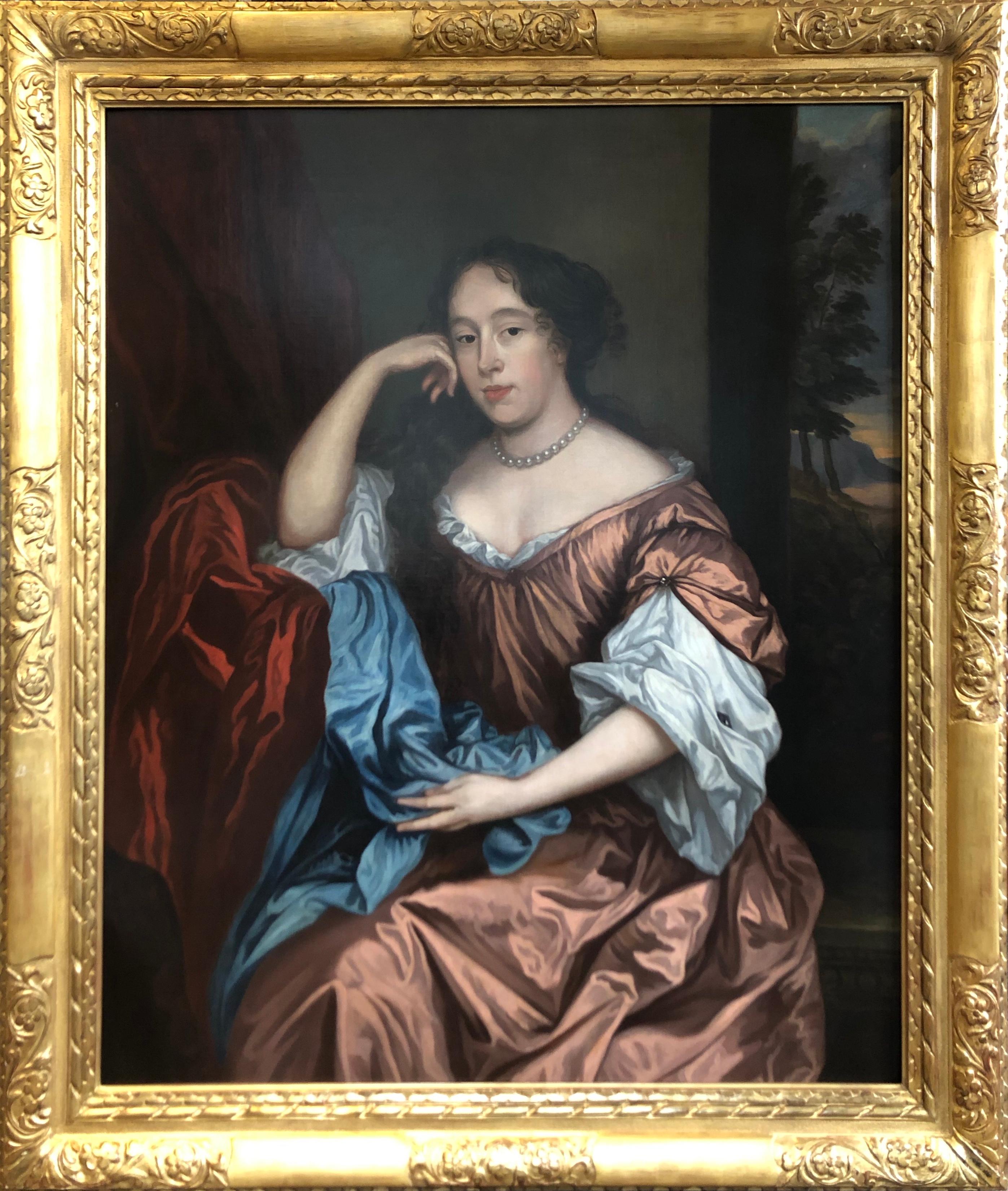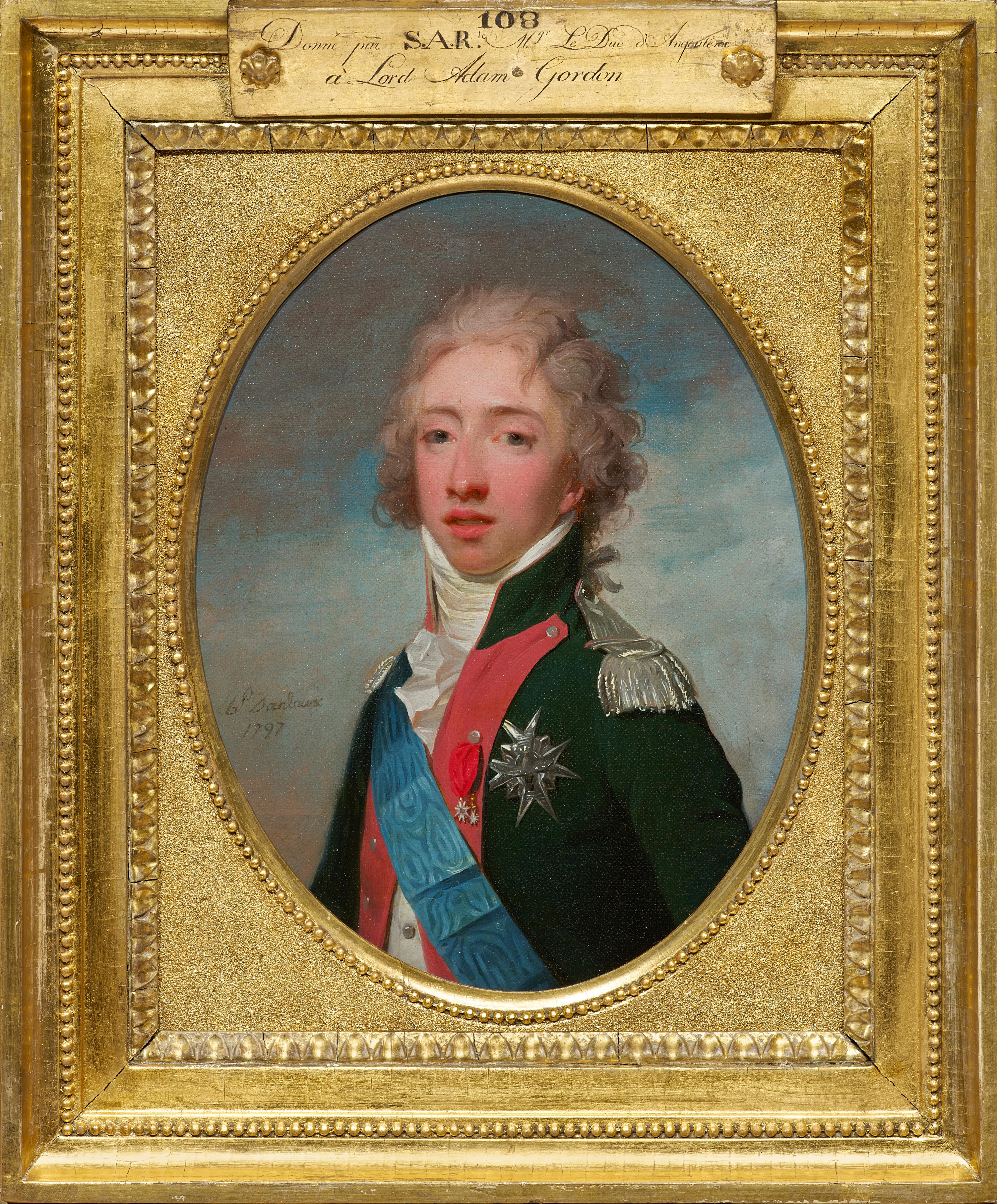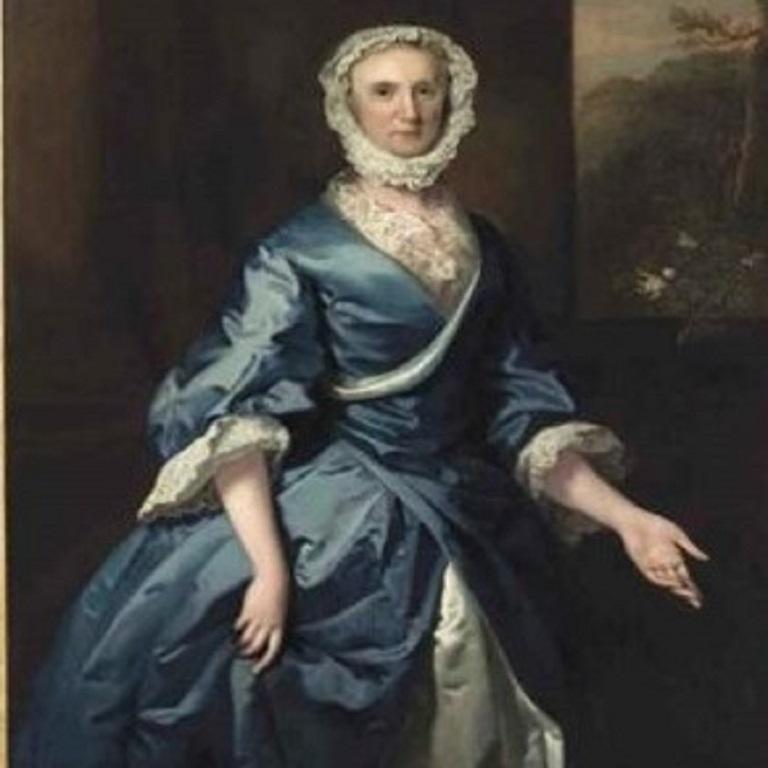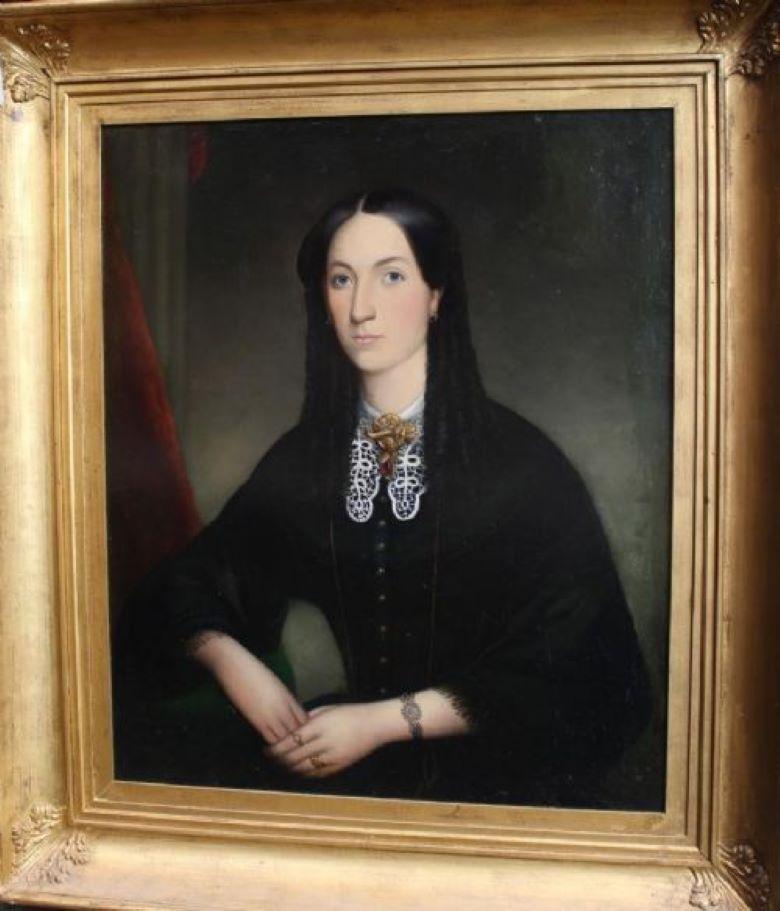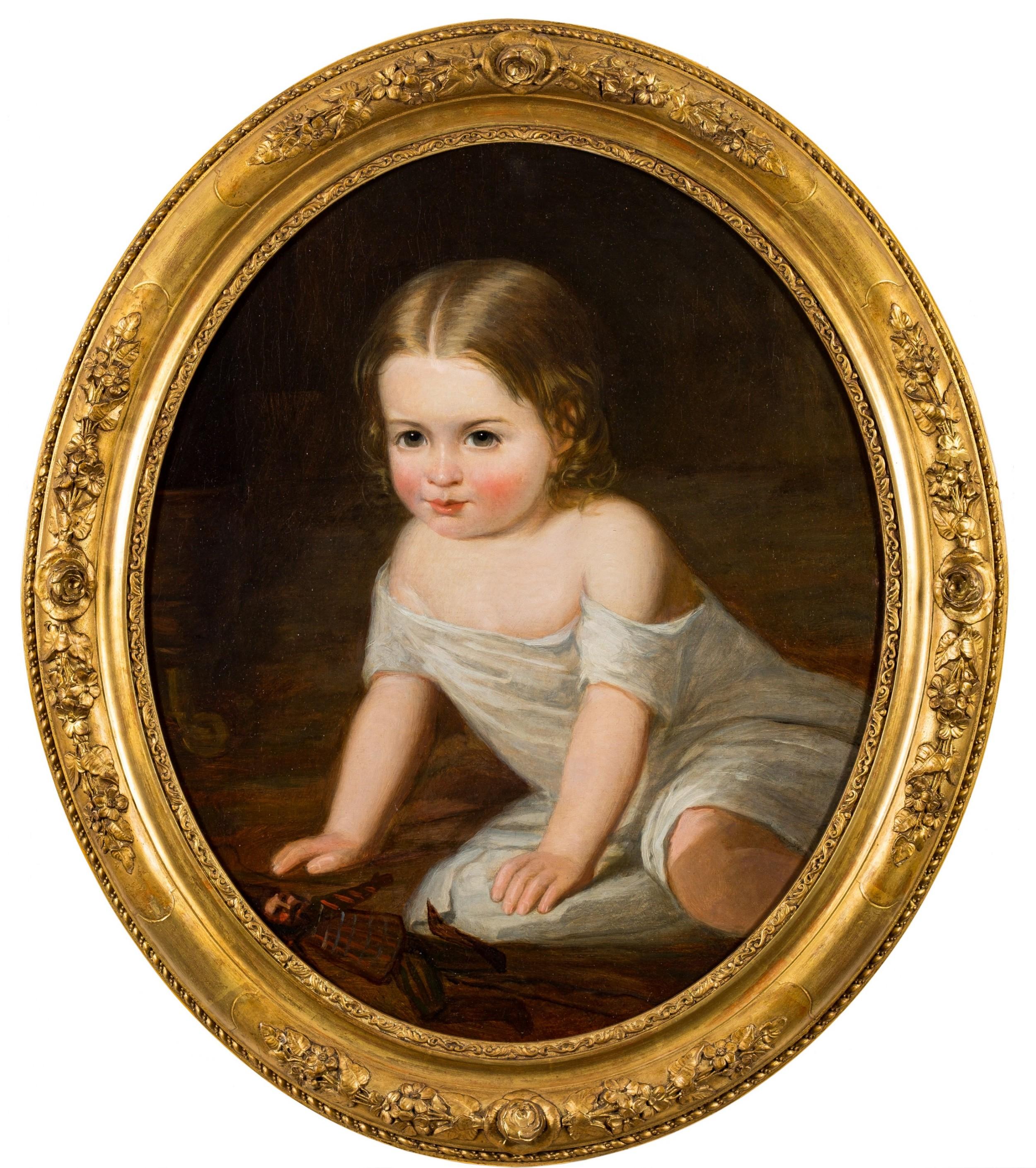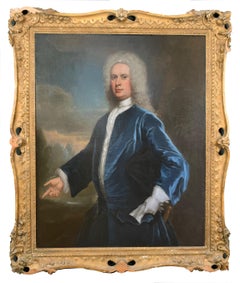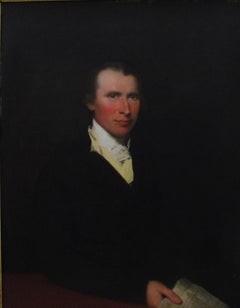
Portrait Of A Gentleman-18th century old master, portrait painting, attb Raeburn
View Similar Items
1 of 10
Attributed to Sir Henry RaeburnPortrait Of A Gentleman-18th century old master, portrait painting, attb Raeburn 18th century
18th century
About the Item
- Creator:Attributed to Sir Henry Raeburn (1756 - 1823)
- Creation Year:18th century
- Dimensions:Height: 44.89 in (114 cm)Width: 36.62 in (93 cm)Depth: 3.94 in (10 cm)
- Medium:
- Movement & Style:
- Period:
- Condition:Fully restored condition, re-lined, cleaned and re-varnished. some minor cracquelure in evidence across his face.
- Gallery Location:York, GB
- Reference Number:1stDibs: LU111323824322
You May Also Like
- Oil on Canvas Painting Portrait of the Italian Noble Family of Zanardi CountBy Lucia Casalini TorelliLocated in Firenze, ITThis museum quality old master oil on canvas formal portrait painting depicting the family of the Count Zanardi is signed by the artist- the female painter Lucia Casalini Torelli- and published in a book dedicated to Casalini Torelli’s workshop and academy. This palatial masterpiece artwork comes directly from the ancient Villa Maraini Guerrieri - Palidano di Gonzaga (Mantua), an historic Italian heritage building owned by the descendants of the family portrayed for more than two centuries, until 1998. The big scale of this oil on canvas masterpiece painting states the relevance of Lucia Casalini Torelli as a painter. The present artwork is a formal family portrait painting that aim to introduce the characters depicted according to their social role in the society. The noble family is all gathered under a loggia overlooking a park, the landscape in the background is partially covered by a beautiful red cloth on the right side. The father stands up and holds the hand of his eldest son, proudly introducing his future heir. The son wears a light-blue dress and red boots, he is depicted in a serious pose holding a black tricorn hat under his arm and a rapier sword on his belt. The mother wears an elegant gold and dark green brocade dress, she is sitting with her youngest daughter on her knees while her second son is by her side. The little daughter wears a lovely long red and dress with white lace and holds an apple on her hand. The son stands next to his mother and is dressed in a brown priestly clothes. This palatial old masters piece was probably painted in 1740 due to the similarities with Cardinal Doria’ s portrait, now on display at the Doria Palace Museum, the official residence of the Prince of Genoa. The painting features original canvas (“prima tela”) and antique original patina, it is in excellent overall condition considering the age, use and its large scale. A formal detailed condition report and the results of the inspection with the UV lamp accompanied by photos is available on request. As well as for its exceptional quality and quite perfect state of conservation, this painting is particularly important and even more valuable both for the artist who painted it and for its absolutely exclusive provenance. Lucia painted the most prominent and powerful noble families of her time, the location of these paintings is unknown to the art market as it is extremely likely that the portraits are still kept in private collections. Furthermore, Lucia was one of the most appreciated artists of her time, so important that she was admitted as a member of the academy at a time when women were forbidden to attend these studies. In 1706, Felice Torelli...Category
18th Century Old Masters Portrait Paintings
MaterialsCanvas, Oil
- Portrait of a Lady, After Sir Peter Lely (1610-1680) Oil PaintingBy After Sir Peter LelyLocated in Uppingham, GBOil Painting After Sir Peter Lely (1610-1680) Portrait of a Lady Housed in a Lely gold Leaf Frame. Peter Lely: In 1647 he became a member of the Pain...Category
17th Century Old Masters Portrait Paintings
MaterialsOil
- Oil Painting Portrait, attributed to John Vanderbank (1694-1739)By John VanderbankLocated in Uppingham, GBOil Painting Portrait of John Campbell, 4th Duke of Argyll,, att to John Vanderbank (1694-1739) Housed in a swept frame which has been restored after photo. Canvas Size 50" x 40", Fr...Category
1690s Old Masters Portrait Paintings
MaterialsCanvas, Oil
- 19th century portrait painted in St Petersburg in 1819Located in London, GBSigned, inscribed and dated, lower right: 'Geo Dawe RA St Petersburgh 1819', also signed with initials, lower centre: 'G D RA'; and signed and inscribed verso: 'Geo Dawe RA Pinxit 1819 St Petersburgh'; Also inscribed on the stretcher by Cornelius Varley with varnishing instructions. Collections: Private collection, UK, 2010 Literature: Galina Andreeva Geniuses of War, Weal and Beauty: George Dawe...Category
19th Century Old Masters Portrait Paintings
MaterialsCanvas, Oil
- Portrait of Jean-Baptiste Greuze, painted on linen by his daughter Anna GreuzeLocated in PARIS, FRThis replica of the last self-portrait of Jean-Baptiste Greuze painted in 1804, executed by his daughter Anna at her father's side and recently rediscovered, provides us with a poignant image of the great artist, represented with panache despite the disillusions of life. 1. Jean-Baptiste Greuze Jean-Baptiste Greuze was the sixth child of a roofer from Tournus and retained a certain rusticity in his behaviour from his provincial childhood, beyond his taste for describing picturesque scenes of the countryside. He initially started training with a little-known painter from Lyon, Charles Grandon, before his genius was recognised in Paris where he became a full-time student of the Académie (of Painting) in 1755. He exhibited his work for the first time at the Salon during the summer of 1755, before leaving on a trip to Italy in the company of Louis Gougenot, abbot of Chezal-Benoît. Upon his return to Paris, Greuze became a prolific painter, participating widely in the Salons held between 1759 and 1765, to which he sent no less than 63 paintings: numerous genre scenes (The Marriage Contract, The Beloved Mother), but also portraits of his family circle, of courtiers and art lovers, or of his colleagues. The Academy closed the doors of the Salons to him in 1767 for not having produced his reception piece within six months of his reception, as was the tradition. He worked actively on this painting (Emperor Severus rebukes Caracalla, his son, for trying to assassinate him ) until the summer of 1769, tackling historical and mythological subjects for the first time. Once this was completed, he was then fully admitted to the Academy, but as a genre painter, and not as an historical painter, which had been one of the greatest humiliations of his life. Greuze then refused any participation in events organised by the Academy or its successor, the Academy of Fine Arts until 1800. Abandoning history painting, he gave a new twist to genre scenes, bringing them closer to history painting, as in this pair of canvases which constitutes some of his masterpieces: The Paternal Curse: The Ungrateful Son and The Paternal Curse: The Punished Son . Married in 1759 to Anne-Gabrielle Babuti, the daughter of a Parisian bookseller, his marriage was unhappy and his wife probably frequently unfaithful. The institution of divorce enabled him to record their separation in 1793, keeping his two daughters Anna-Geneviève, born in April 1762, and Louise-Gabrielle, born in May 1764, with him. Little is known about his daughter Anna except that she was herself a painter and lived with her father until his death. It is likely that most of the paintings she produced up to that date were attributed to her father, whose technique she shared to a great extent, making it extremely difficult to establish an autonomous corpus of her paintings. Greuze died in his studio at the Louvre on March 21st 1805. The attention paid to the expressivity of his characters and the emotional charge they convey enabled Jean-Baptiste Greuze to enjoy immense popularity with the eighteenth-century public, and they still constitute Greuze's true modernity. As the artist said, "I dipped my brush in my heart". Greuze was also an exceptional draughtsman and a portraitist of immense talent and exceptional longevity who painted both the Dauphin (the son of Louis XV and father to Louis XVI) and the young Napoleon Bonaparte. 2. Greuze's self-portraits Greuze was very much influenced by Dutch paintings during all his life. While the source of his inspiration for genre scenes can be found in Gerard Dou...Category
Early 1800s Old Masters Portrait Paintings
MaterialsLinen, Oil
- Portrait of Senator Bartolomeo Panciatichi by Santi di Tito (1574)Located in PARIS, FRThis recently rediscovered portrait of Santi di Tito depicts a Florentine senator, with a letter in his hand indicating that the painting was executed in 1574 when the sitter was 66 years old. On the basis of these clues, it is tempting to view it as a portrait of Bartolomeo Panciatichi, who was painted some thirty years before by Bronzino (1503 - 1572). While the treatment of the hands recalls the Florentine tradition of Mannerist portraits, the comparison with Bronzino's portrait illustrates Santi di Tito's search for greater realism, despite the stereotyped composition. 1. Santi di Tito, Counter-Reformation painter and portraitist Santi di Tito was the great painter of the Florentine Counter-Reformation. He proposed a new artistic language that broke away from Mannerism. Little is known about his training in Florence (perhaps alongside Bronzino or Baccio Bandinelli), but this period of training enabled him to join the Company of Saint Luke, the guild of Florentine painters, in 1554. Between 1560 and 1564, Santi di Tito spent time in Rome, where he frequented the workshop of Taddeo Zuccari. This stay had a fundamental influence on his work, thanks to the discovery of the late work of Raphael, but also his encounters with the painters Francesco Salviati and Federico Barocci. Around 1565, Santi di Tito returned to Florence, where he remained until the end of his life, dividing his talents between the creation of important religious paintings and countless portraits. He became one of the city's leading painters, distinguishing himself, in particular, in the creation of large religious compositions in which the spirit of the Counter-Reformation was reflected. In 1568, Santi di Tito became a member of the Confraternity of Saint Thomas Aquinas...Category
16th Century Old Masters Portrait Paintings
MaterialsPoplar, Oil
Recently Viewed
View AllMore Ways To Browse
Piet Van Der Hem
Princess Monaco Pen
Sigmund Pollitzer
St Anthony Oil On Canvas Gold Frame
Steve Kaufman Rat Pack
Suzanne Hurel Art
Suzanne Hurel
The Herring Net
The Letter Loves Missive
Thomas Bardwell
Tina Allen Bronze Art
Tina Allen
Trixie Mattel
Weller Pottery Window Box
William Skilling Elephant
Avon Bottles
Early 19th Century Oil A Ruddy Faced Man
Endre Roder
